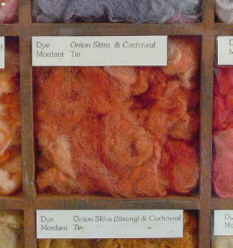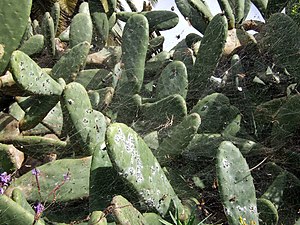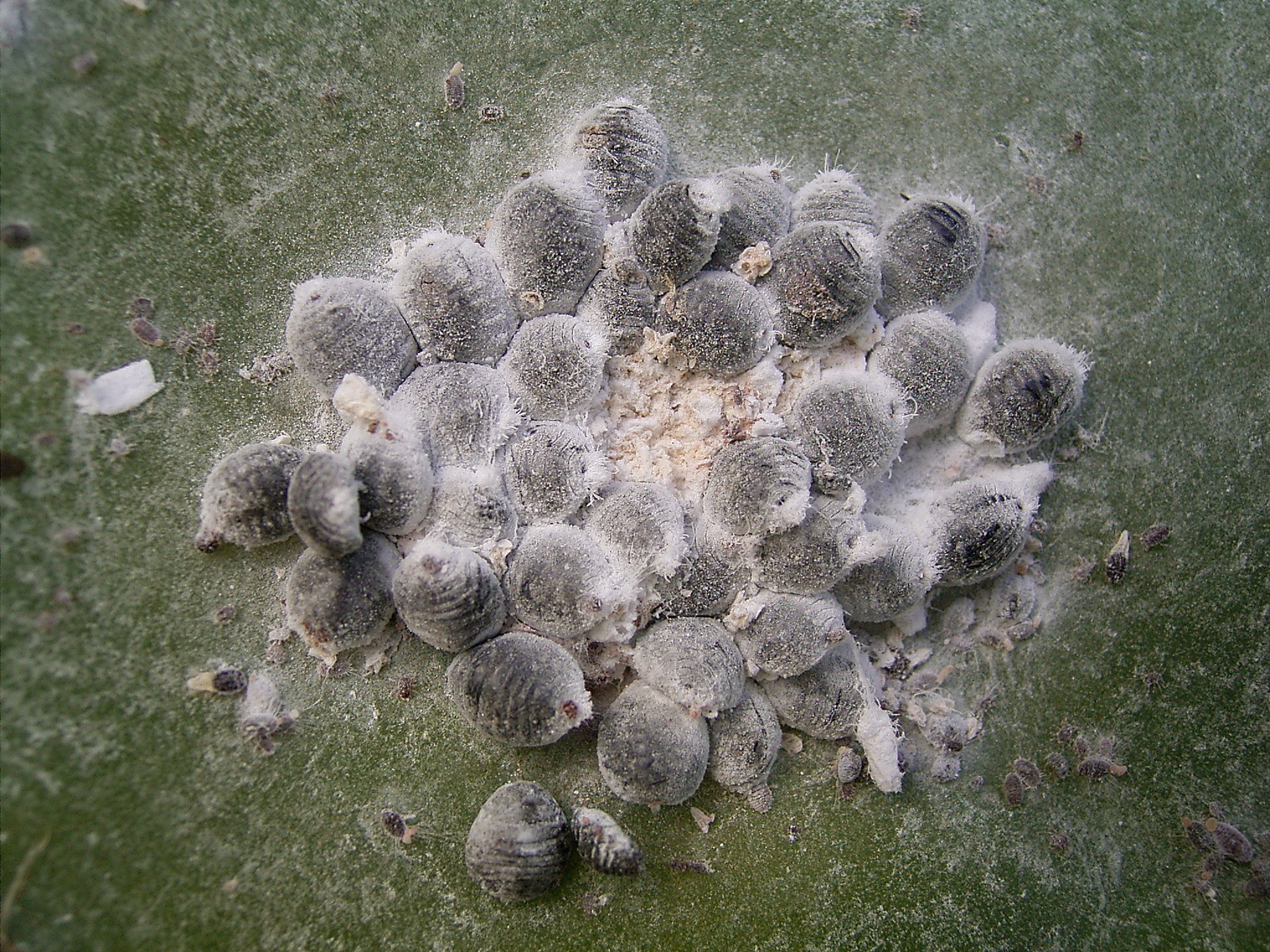However, there are other insects besides honey bees that have been really useful for society. One of these lesser known insects is the cochineal bug. This bug (part of the True Bugs, or Hemiptera) is a flat, pancake-shaped insect that pretty much lives its life flat on a cactus, feeding all day. Below is a picture of a colony of them feeding on a cactus pad.
They are usually covered with a powdery coating of wax, which is thought to help protect them from predators and drying out (biting a block of wax isn't exactly enticing to a predator!). All of these insects are females; males usually only live long enough to mate and fertilize eggs before dying. Males don't even live long enough to eat, and don't have mouths!
So why are these little, flat bugs such a good thing? Well, since the 15th Century Mayans and Aztec peoples of Central America have been harvesting these insects for dye, or carmine. If you take your finger and press on one of these insects to squish it, they produce a deep red colored fluid (carmic acid causes the color), which is used for dye.
Central Americans would collect these insects off of the cactus plants, dry them, and then mix the ground material with salts to extract the dye. The dye was so invaluable, in fact, that it was only second to silver as an export during the early Colonial Period. Only until artificial dyes were developed in the late 19th Century did it wane in popularity.
 |
| Cochineal-dyed wool |
 |
| A large colony of insects |
If you want to learn more, check out the Wikipedia page about the insects, their history, and their dye...and next time you see a cactus, take a closer look for another beneficial insect!


Great Information sharing .. I am very happy to read this article .. thanks for giving us go through info.Fantastic nice. I appreciate this post.
ReplyDeleteמדביר ברחובות